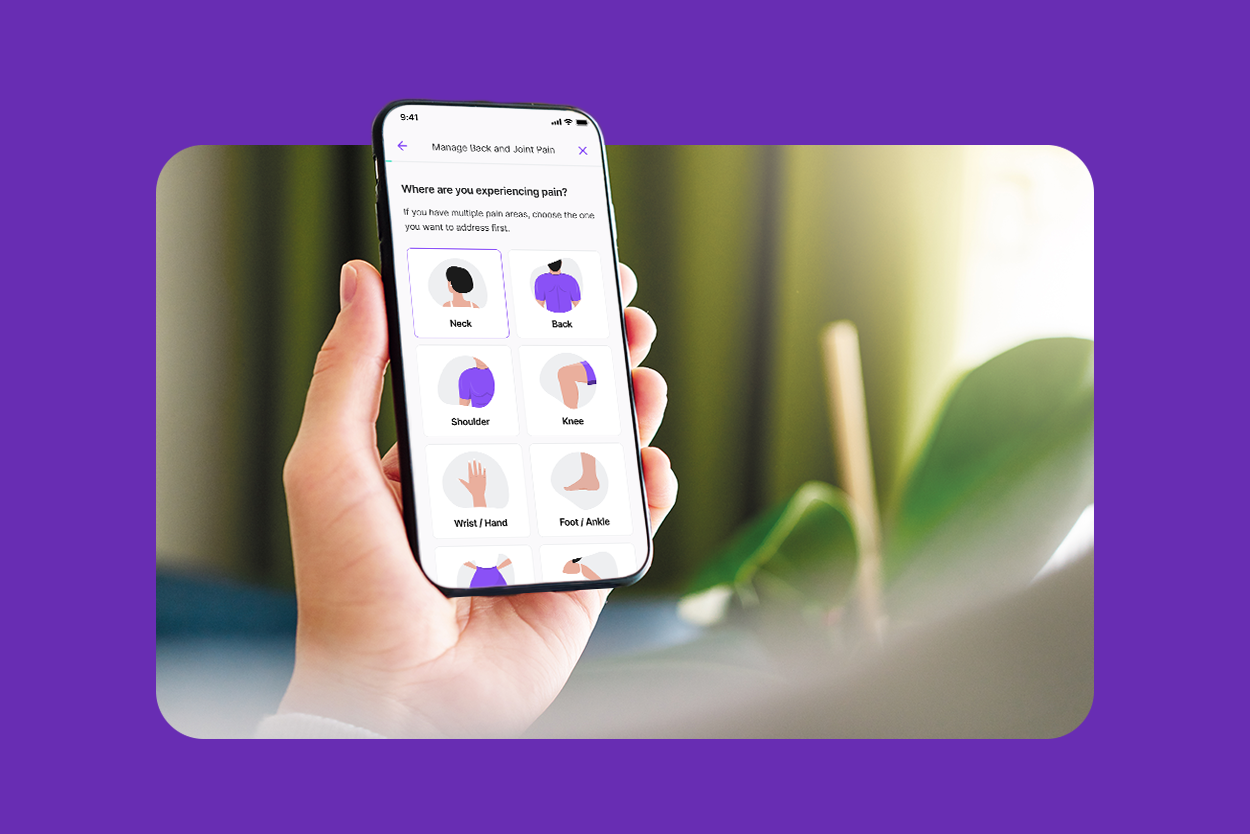Why Healthcare Navigation is Key in Increasing the Adoption of Virtual Benefits
Let’s address the real problem. The US healthcare system is confusing, overwhelming, fragmented and frustrating.
Connected Navigation Platform
Guiding to high-value care
Behavioral Health
Foster a mentally healthy workplace
EAP
Supporting holistic wellbeing
Virtual MSK Care
Reimagining musculoskeletal care
Virtual Primary Care
Powered by smart navigation
Surgery Centers of Excellence
Best-in-class surgical outcomes
Virtual Urgent Care
Immediate care, any hour of the day
Chronic Care
A new approach to chronic care
Integrations
Flexible to any strategy
4 min read
 Claire Wiseman Imber
:
February 23, 2022
Claire Wiseman Imber
:
February 23, 2022

During the COVID-19 pandemic, virtual urgent care’s resurgence offered an alternative pathway to care. It changed consumer insights on the topic, too; In a 2021 survey from McKinsey & Company, more than half of consumers indicated they preferred a health plan with virtual health benefits. With that in mind, it's time to rethink traditional care models, and acknowledge virtual urgent care’s ability to improve accessibility, affordability, and health outcomes.
Even before the pandemic, virtual urgent care (aka telemedicine) was an ideal first stop for those seeking non-emergent medical care. However, in the time since, much has evolved, including consumer and provider attitudes, regulatory expansions, and a continued focus on a seamless user experience.
In this post, we’ll discuss why building a strategy that highlights a virtual-first approach is your best bet for creating a continuous, relationship-focused, and cost-effective care experience for employees.
Virtual urgent care evolved right along with communication technology. From the very beginning, it allowed healthcare providers to connect with those who couldn’t otherwise seek care. Physicians may have used telegraphs to communicate about injuries as far back as the Civil War. Once telephones became more common in homes, doctors could communicate directly with their patients.
As we’ve moved away from the phone and toward text messages, smartphones, and video, virtual care models have changed, too. Today, most major virtual urgent care providers incorporate video to build a face-to-face rapport between medical providers and their patients.
In other words, a virtual visit can deliver care to anyone who can’t, won’t, or doesn't want to visit in-person. It’s a more accessible option for individuals in rural areas, who are immunocompromised, or have limited mobility (see This Benefit is Vital for Rural Employees for more).
While it can’t replace in-person visits for everything, it can connect providers to patients quickly, without the added complications of travel, and still treat common medical conditions effectively. And it opens the door to other virtual care solutions, including treatment for chronic and acute conditions and even primary care. Virtual urgent care's ease makes it an easy on-ramp to other cost-effective virtual care solutions.
When virtual urgent care is the front door to healthcare, employees save time and money. A classic example of the alternative is a person who may be experiencing flu-like symptoms, and decides to go to the emergency room in the middle of the night. We hope they’ll discover their illness is minor, but in an emergency room, even minor illnesses come with a shocking price tag of about $2,032, according to one study. That number is 25 times higher than the average cost of a virtual visit ($79) and 12 times higher than a primary care visit ($167), and 10 times higher than traveling to an urgent care center ($193).
Bottom line: virtual visits can help patients avoid unnecessary and costly care. An online healthcare provider can write referrals and prescriptions, recommend testing, or suggest a follow-up appointment. The cost to employers is lower relative not just to ER, and urgent care, but to many primary care providers, too. With virtual urgent care as a front door to care, employees can make smarter choices for both their health and their wallets.
When further care is needed, virtual care providers can help patients quickly choose the next steps. That might mean avoiding a crowded waiting room or just saving the time associated with a commute. Telemedicine has become a meaningful way to take the burden off a stretched medical system. After an initial spike to more than 32% of office and outpatient visits via virtual urgent care in April 2020, utilization levels have largely stabilized from 13 to 17% across all specialties. It’s worth noting that medical care doesn’t have to stop with a virtual visit.
For your employees, the cost of a virtual visit may vary from free to around the cost of an average copay. Many HealthJoy members access online medical consultations for free. The price depends on a variety of factors, including HSA eligibility. Many providers are now offering a virtual appointment option in an effort to keep up with care. You’ve probably even received an email from your own doctor at some point. We're even seeing an uptick in virtual visits for services like behavioral health or musculoskeletal pain.
Additionally, regulatory changes that helped facilitate the overall expansion of virtual urgent care visits have been extended until the end of 2023 or when the public health emergency ends. For example, in its 2021 physician fee schedule (PFS), the Centers for Medicare & Medicaid Services included reimbursable current procedural terminology (CPT) codes for virtual care visits, making it easier to track and bill for various medical services. Other amendments to various statutes in the PFS essentially remove geographic restrictions for the beneficiary, and allow a person’s home to be an originating site for various virtual care services.
In short, the virtual care landscape is evolving. As more providers turn to virtual care, we may see permanent changes in the way people approach care delivery options. Regardless, if the success of your benefits package hinges on your ability to minimize costs and increase satisfaction, it’s essential that you set up your virtual urgent care benefit as your employees’ front door to care.
Sure, virtual urgent care is more accessible, and often less expensive, than in-person alternatives. However, that hasn’t helped it leap to precedence before, and we can’t assume it will now because of temporary shifts. Making virtual urgent care the front door to healthcare requires us to change the way employees view it.
In our 2021 Employee Benefits Insights report, employees told us they liked virtual care and had strong preferences about its delivery. Respondents said they still strongly prefer a human voice in virtual care, choosing video or phone communications over text-based ones. However, understanding and awareness remain barriers to utilization. In fact, 17% of employees surveyed weren’t sure they had a virtual urgent care benefit at all.
To change the paradigm, you’ll need to a connected healthcare navigation platform that can serve as a virtual front door to care. These platforms empower employees to understand their benefits and give them a place to turn to when they need care.
If virtual urgent care benefits are provided through a health plan and located only in the insurance company’s app, it can be more difficult to keep them top-of-mind. A centralized experience, along with regular reminders sent to their mobile device — like those offered in our JOY Campaign Journeys throughout the year or custom campaigns through Broadcaster — can help increase awareness and bolster utilization.
Virtual urgent care has emerged as an effective solution for employers looking to contain costs, and for patients seeking an alternative to in-person care. For employers, the success of these benefits often comes down to creating a connected, rewarding, and personalized experience for employees.
This post was first published in 2020 and was updated in 2022.

Let’s address the real problem. The US healthcare system is confusing, overwhelming, fragmented and frustrating.

HealthJoy is a connected healthcare navigation platform. But what do terms like connected care and connected healthcare navigation mean? And how can...

“New normal.” It’s a refrain that’s now part of our collective vocabulary (much to our chagrin). It’s true haven’t seen anything like the COVID 19...